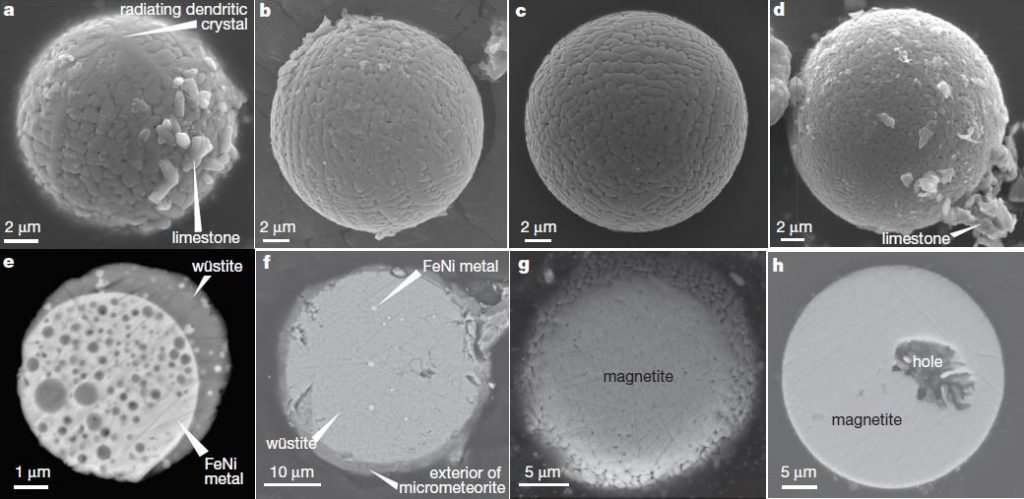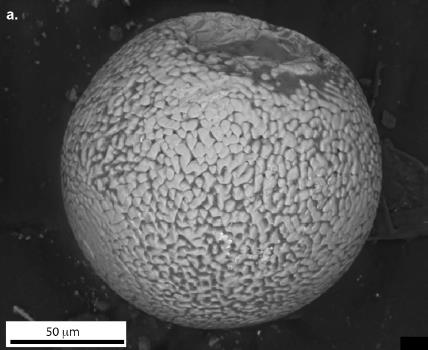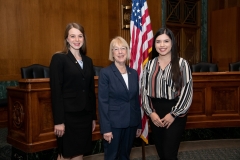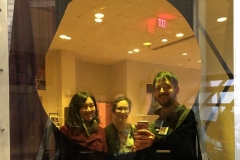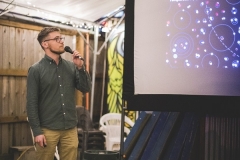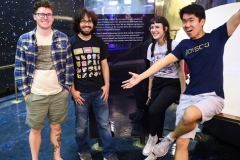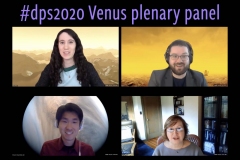Annual Workshop 2020
Unfortunately, due to the ongoing pandemic we were unable to hold our annual workshop this year. We’re keeping a close eye on how the pandemic progresses to see if we can get a modified (possibly virtual) workshop in early next year!
Constraining Archean CO2 levels with micrometeorites
A Research Rotation Report by Owen Lehmer

Working with Roger Buick from the UW Earth and Space Sciences (ESS) Department and Don Brownlee from the UW Astronomy department, this project aimed to collect, analyze, and model micrometeorites found in Archean (4 billion to 2.5 billion years ago) carbonates. The carbonates we processed, collected by Roger and his students, ranged from 3.3 billion years old to about 2 billion years in age (just younger than the Archean). The lab process these rocks were subjected to was straightforward. The first step was to crush them to sub-centimeter size pieces in the ESS rock prep lab, followed by a bath in a 10% HCl solution for 24 to 48 hours. This effectively dissolved the carbonate rocks while leaving the micrometeorites of interest unharmed. The metallic iron in the dissolved rock goop was extracted via magnetic separation and the resulting iron particles were observed under a microscope for shiny, iron spheres, indicative of I-type micrometeorites, also called cosmic spherules.
A micrometeorite is simply a small piece of space dust, less than a few millimeters in size, that falls to Earth. Micrometeorites are a common occurrence today and can be found in parking lots, rooftops, gutters, and just about any other outdoor space you’d care to inspect. This ubiquity of micrometeorites is not unique to the Modern Earth and has been the case throughout Earth’s history, even during the Archean. The micrometeorites of interest in this project were a specific type micrometeorite, called I-type cosmic spherules. The I-type refers to the composition, iron dominated, and the cosmic spherule term indicates that the micrometeorite melted when it hit the atmosphere, forming a sphere. These I-type cosmic spherules are of particular interest because one: they can be magnetically separated from our dissolved carbonates and searched for under a microscope, two: they do not weather or alter easily and can be preserved in the rock record for billions of years intact, and three: when they enter the Earth’s atmosphere they melt for just a few seconds in the upper atmosphere. During this short melt window, they react with the gases around them in the atmosphere. This brief, molten interaction with the atmosphere might provide a record of the gases present at the time of entry.
The ability of micrometeorites to constrain atmospheric gases upon entry was the true motivation for this work. The composition of the Archean atmosphere is poorly constrained especially with regard to atmospheric CO2 levels, for which estimates span several orders of magnitude. Fortunately, CO2 reacts with iron, which is the dominant component of the I-type cosmic spherules, and by analyzing the level of oxidation in Archean micrometeorites we have the possibility of estimating the atmospheric partial pressure of CO2 during entry. Should our model succeed, we expect to provide improved atmospheric CO2 concentrations for the Archean Earth.
Despite crushing numerous samples and spending many hours looking through microscopes in search of I-type cosmic spherules, we didn’t find a single one in our Archean rocks. However, another research group has successfully extracted I-type cosmic spherules from 2.7 billion year old carbonates, which we can run through our micrometeorite entry model. Currently our micrometeorite model is being validated against modern I-type cosmic spherules, but it will soon be ready to estimate the atmospheric CO2 level on Earth 2.7 billion years ago!
Where in the World Are our Astrobiologists
Despite the ongoing pandemic, our community members have been hard at work with their research, attending (virtual) conferences, and outreach activities! Check out the pictures below to see what everyone has been up to and how our members have been able to maintain a sense of community during these trying times!
Don’t forget, you can stay more up to date with everyone’s travels and adventures by subscribing to our UW Astrobiology Instagram page



